This article was last updated on July 4, 2025
The sales grind never really stops. But how sales teams handle it has changed dramatically in recent years. What once meant hours of repetitive work (manual follow-ups, task reminders, clunky spreadsheets) are now just a few clicks away from being automated, thanks to sales automation software.
These tools were born from the frustrations of sales teams. They’ve gone from helpful add-ons to daily essentials that take the pressure off. Before automation entered the picture, studies found that sales reps spent as much as 70% of their time on non-selling tasks.
Today's sales automation software flips that script entirely. Your reps can focus on building authentic relationships, closing deals, and growing pipelines. Even better, sales automation software rarely remains static. The best platforms constantly adapt to match the demands and pace of modern sales cycles.
Below, we briefly go over nine of the best sales automation software solutions in 2025 to help you find the one that fits your rhythm.
What Is Sales Automation Software?
Sales automation software looks to automate the tedious, repetitive parts of the sales process so that it runs efficiently, smoothly, and with as little downtime as possible. It handles everything from lead sourcing and follow-ups to email outreach and even deal tracking.
Some tools are all-in-one platforms that support nearly every part of the sales cycle. Others zoom in on specific tasks like email prospecting or call scheduling. No matter the scope, the goal is the same: less busywork, more selling.
Most sales automation tools fall into categories like:
- Email finders and verification
- CRM and pipeline management
- Email sequences and content
- Lead prospecting and qualification
- Sales analytics and reporting
- Call management and recording
- Social selling and engagement
Why Use Sales Automation Software?
Ask any sales rep what’s eating up most of their time, and chances are they’ll say admin work. Manual data entry. Updating records. Digging up contact info. All necessary, sure, but not what moves the needle.
Sales automation software solves this problem by delivering three key benefits:
More Qualified Leads
Your team needs leads, and lots of them. With average conversion rates between 2% and 5% across industries, closing a hundred deals means you'd need thousands of leads. Manually sourcing and qualifying that many leads (if even possible) just isn't sustainable.
Automation tools pull leads from multiple sources, verify contact information, and score them based on your criteria. Some platforms even send initial outreach emails automatically. Your team gets warm, qualified prospects ready for conversation instead of cold contact lists.
Better Data and Reporting
Sales teams live and die by numbers. But building reports manually, especially across global teams, is a chore. Automation tools track everything from pipeline activity to campaign performance, making reporting fast and accurate.
Want to know how your cold email campaign is doing? Most tools will show you open rates, replies, clicks, and more, all in one dashboard. You get detailed analytics without the spreadsheet headaches.
Serious Time Savings
This is arguably the biggest benefit. Sales automation software gives your team their time back. Tasks that used to take hours now happen in minutes. Cold email templates, prospect research, follow-up sequences, and performance tracking all run in the background.
And when your team isn’t buried in repetitive work, they’re free to spend more time on high-value activities that drive revenue.
Top 9 Sales Automation Software of 2025
There’s no shortage of tools promising to save your sales team time. But only a few actually deliver where it matters: consistent outreach, smooth workflows, and better outcomes across the board.
Here are 9 of the best sales automation software tools to consider in 2025:
Instantly
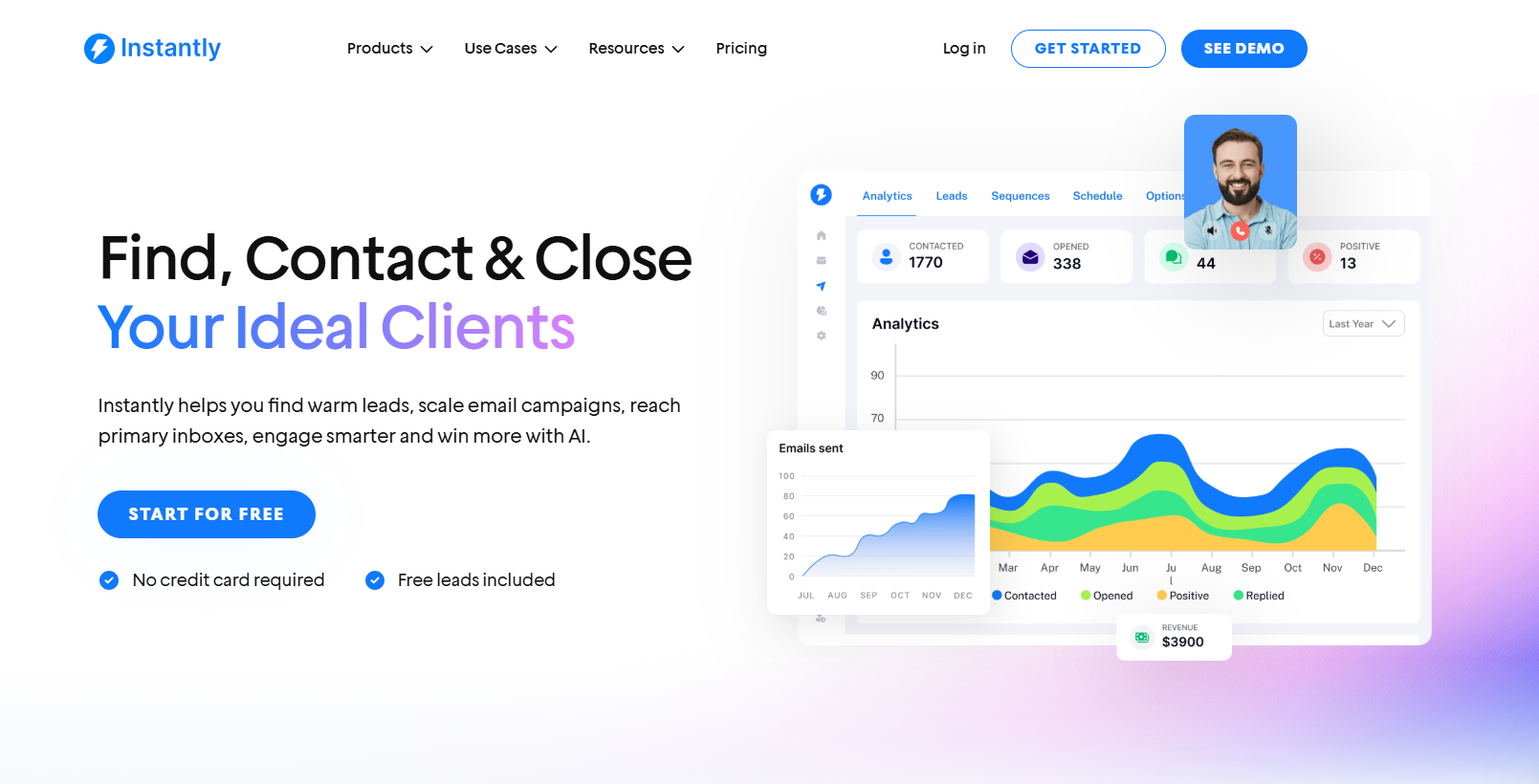
G2 Rating: 4.8/5 ⭐ from 3,698 reviews
- Type: Cold Email Automation & Sales Engagement
- Pricing: Starts at $37/month (Growth Plan); $358/month unlocks full premium access (Light Speed Plan)
Instantly.ai is designed to automate the entire front end of your sales process, from finding the right leads to keeping your pipeline moving and organized. Our built-in CRM makes it effortless to track lead activity, campaign performance, and deal stages in one place. No jumping between tools or updating spreadsheets manually.
The 450 million+ verified B2B lead database is a major time-saver. You simply define your ICP and filter by firmographic, seniority level, intent data, etc. Instantly then pulls high-quality prospects directly into your campaigns.
Once your leads are in, automated routing sends them straight into the right outreach sequence based on your targeting rules. That’s fewer bottlenecks and better alignment with your sales playbook.
Add in email deliverability protection, analytics built for sales teams, and hands-free email personalization, and you’ve got a system that doesn’t just automate campaigns, but supports the entire outbound motion from lead to close.
Standout Features:
- AI-powered cold email campaigns with smart A/B testing, dynamic personalization, and pre-built templates
- Built-in CRM that tracks leads across the entire deal cycle
- 450M+ verified leads enriched with firmographic data and buying intent
- Automated lead routing based on saved ICPs
- Email warmup & deliverability engine with real-time blacklist protection and a private warmup network
- Instantly VIP: Done-for-you outreach setup, complete with a dedicated strategist and ongoing support
- Instantly Copilot: An AI assistant that builds and launches entire campaigns from a simple chat interface
Hubspot Sales Hub
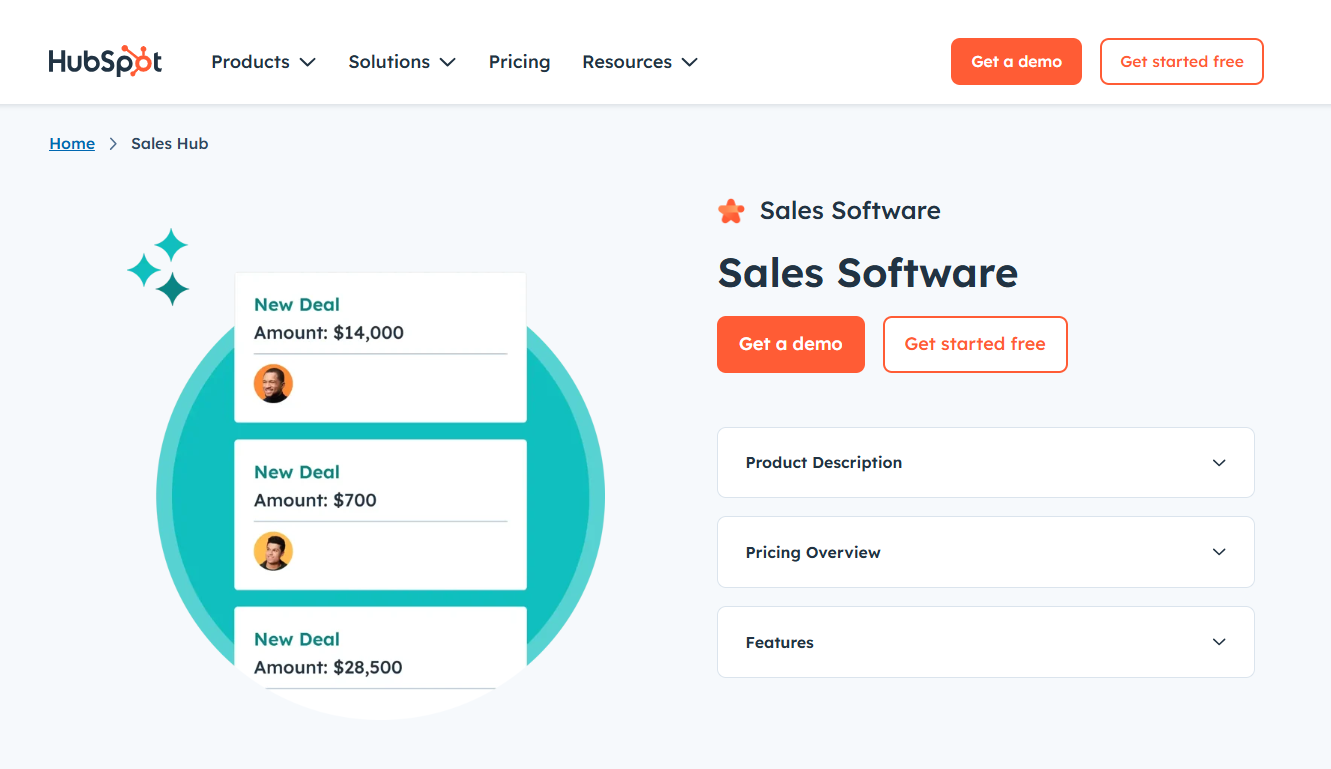
G2 Rating: 4.4/5 ⭐ from 12,380 reviews
- Type: All-in-One CRM and Sales Platform
- Pricing: Free tier available; Starter at $20/month per seat, Professional at $100/month per seat, Enterprise at $150/month per seat
HubSpot is a go-to choice for businesses that prefer everything sales under one roof. The platform combines CRM, email marketing, and sales automation in a way that actually makes sense. Where some tools feel bolted together, HubSpot's features work seamlessly because they were built to complement each other.
For smaller teams, the free tier gives you solid basic functionality, including contact tracking, email templates, and meeting scheduling. Once you outgrow the free version, the paid plans unlock powerful automation features that can handle complex sales processes.
HubSpot's sales reporting capabilities are genuinely impressive. You can track every interaction, see which campaigns drive results, and get insights that help you optimize your entire sales funnel.
The cherry on top? HubSpot's integration ecosystem is massive, connecting with virtually every business tool you're already using.
Standout Features:
- Integrated email tracking, templates, and sequences
- Deal and task automation with visual pipelines
- Built-in scheduler and live chat tools
- Deep third-party integrations with Stripe, Zoom, Gmail, Slack, and more
- Centralized reporting and dashboards for sales performance
Apollo.io
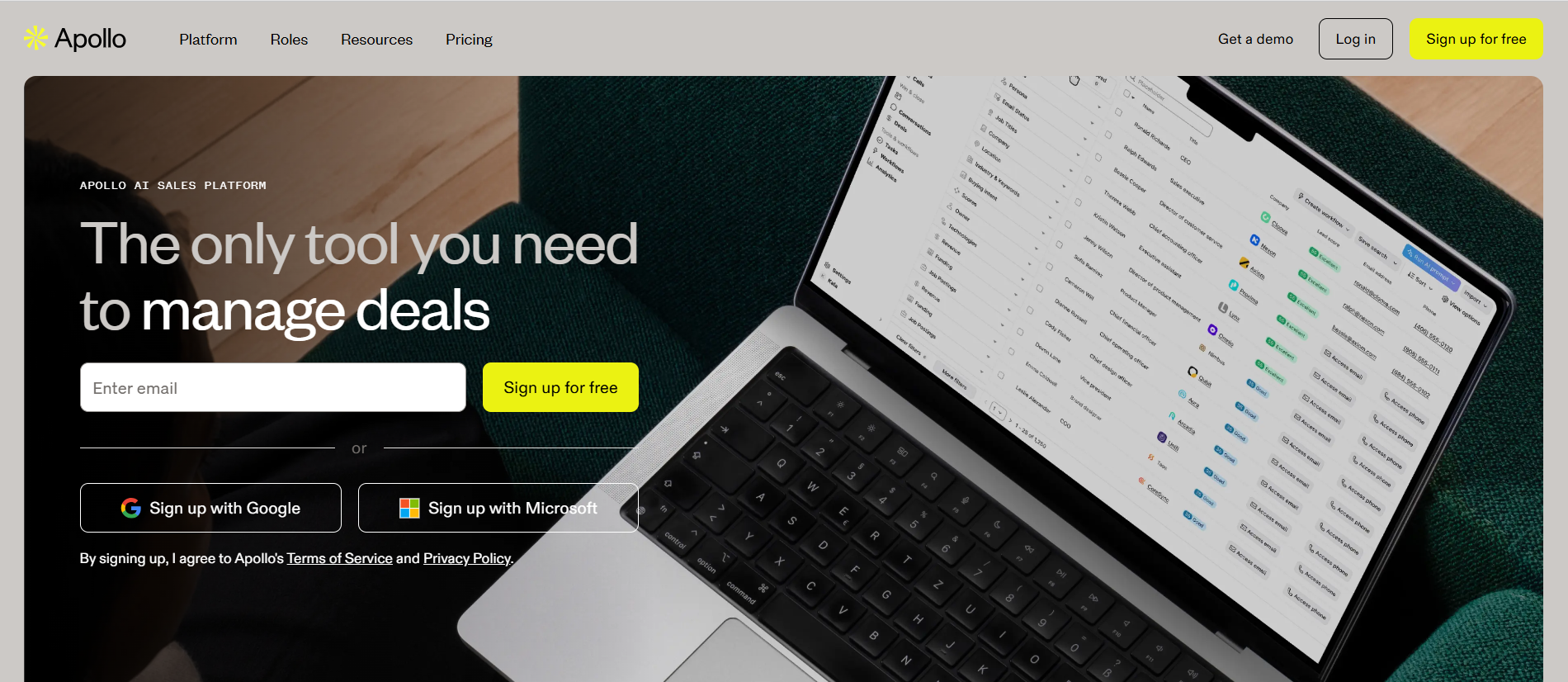
G2 Rating: 4.7/5 ⭐ from 8,838 reviews
- Type: Sales Intelligence and Engagement Platform
- Pricing: Free tier available; paid plans start at $59/month per user
Apollo.io combines a massive contact database with email sequencing and phone dialing capabilities. With 210 million+ B2B contacts and 35 million+ companies, it's one of the largest contact databases available.
While it’s strong on data, Apollo has also added sales engagement workflows with automatic email sequences, LinkedIn steps, and task reminders, making it a strong mid-market competitor to pricier tools.
The Chrome extension makes prospecting incredibly efficient. You can find contact info, add people to sequences, and update your CRM without leaving the webpage you're browsing.
Standout Features:
- 210+ million verified B2B contacts and 35 million+ companies
- Email sequencing and automation
- Built-in dialer for cold calling
- Lead scoring and enrichment
- Chrome extension for easy prospecting
- A/B testing for email campaigns
- Integration with major CRMs
Sales Navigator

G2 Rating: 4.3/5 ⭐ from 1,984 reviews
- Type: Social Selling and Lead Prospecting
- Pricing: Core plan at $99.99/month, Advanced at $149.99/month, Advanced Plus at $1,600/month
If LinkedIn is where your prospects spend time, Sales Navigator transforms your regular LinkedIn account into a prospecting powerhouse. The platform gives you advanced search filters that help you find exactly the right people, by job title, company size, industry, geography, or even recent job changes.
Another big selling point is its enhanced messaging capabilities. Instead of being limited to connecting with people, you get InMail credits that let you message anyone directly. Plus, you can save leads to lists that automatically update when people change jobs or companies.
Sales Navigator's intent data is remarkably useful. You can see when prospects engage with your company's content or show other buying signals. This intelligence helps you time your outreach perfectly.
Standout Features:
- Advanced lead search with 50+ filters for laser-targeted prospecting
- Real-time lead and account updates
- Lead recommendations based on your preferences
- Saved lead lists with CRM sync
- Improved access to InMail for direct outreach
- Integration with popular business tools
Close
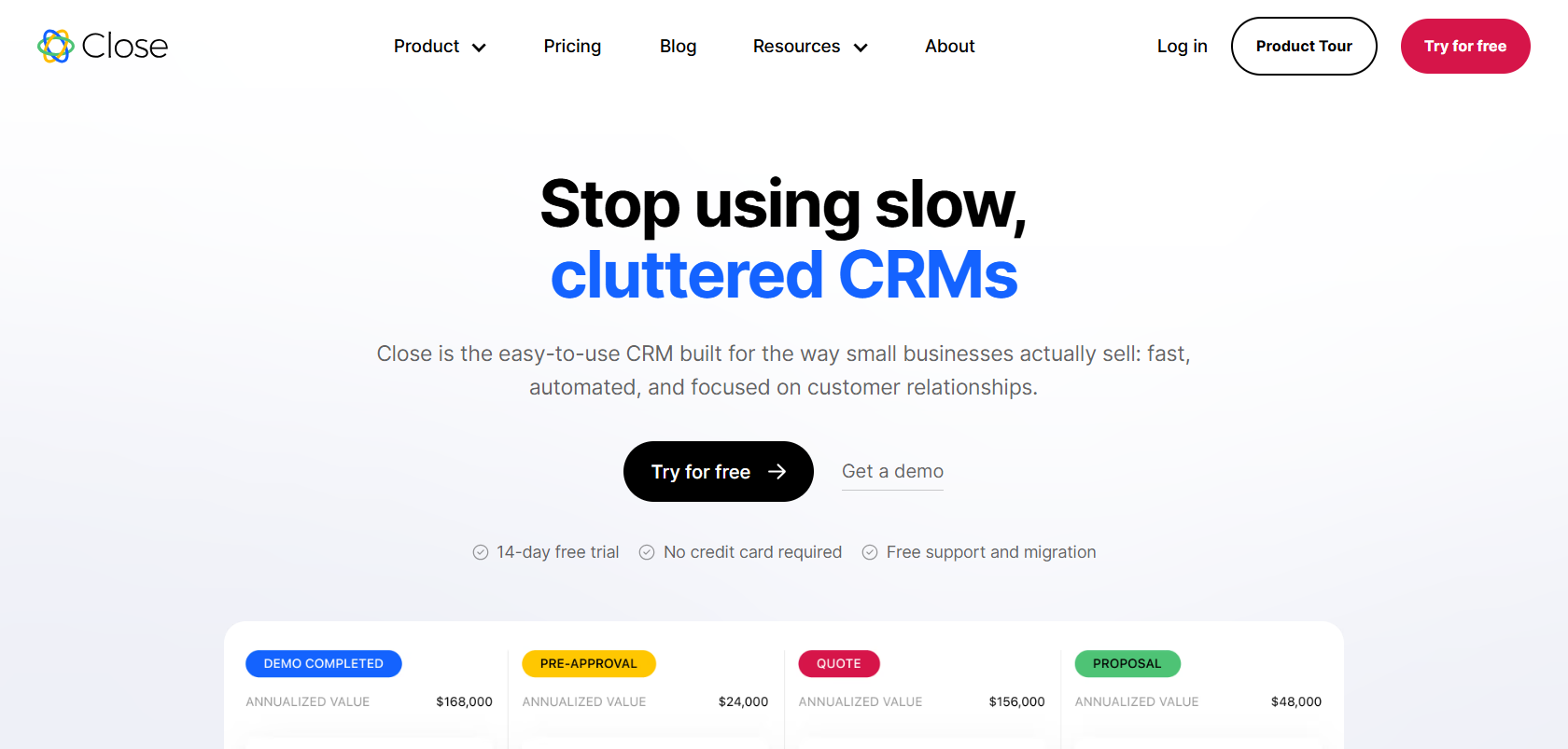
G2 Rating: 4.7/5 ⭐ from 1,792 reviews
- Type: CRM and Inside Sales Automation
- Pricing: Starting at $49/month per user
Close is a full-featured sales CRM with built-in calling, emailing, SMS, and automation tools. The platform is designed around the philosophy that sales is about conversations, not just emails. The built-in power dialer, SMS capabilities, and call recording make it perfect for inside sales teams.
The interface is clean and intuitive, which means even new team members can become productive quickly. The mobile app is particularly well-designed for sales reps who are always on the move.
Standout Features:
- Power dialer, SMS, and email all in one app
- Easy pipeline tracking and task automation
- Email sequences with open/reply tracking
- Mobile app for iOS and Android
- Native integrations with HubSpot, Zoom, Zapier, and more
Salesforce Sales Cloud
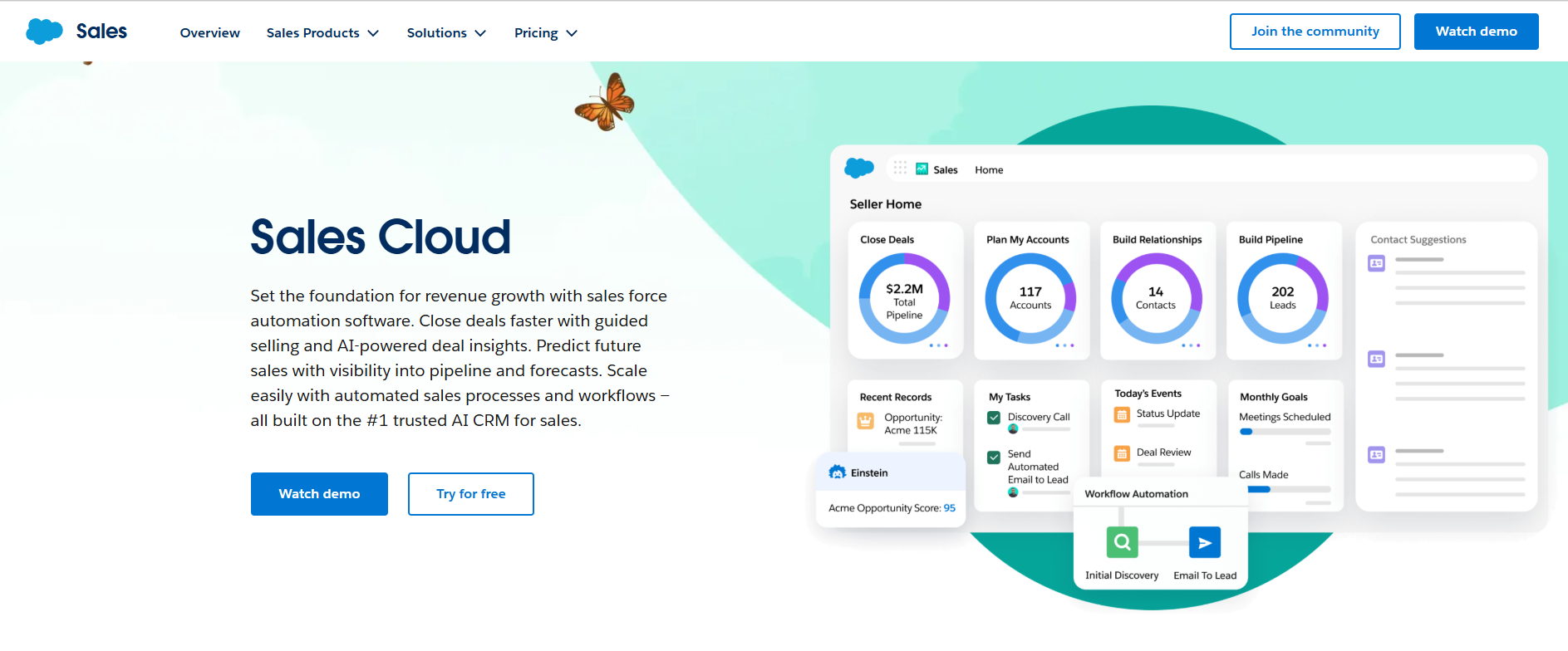
G2 Rating: 4.4/5 ⭐ from 23,344 reviews
- Type: Enterprise CRM and Sales Automation
- Pricing: Starting at $25/month per user
Salesforce remains the gold standard for enterprise sales automation. The platform can handle incredibly complex sales processes and customizations that other tools simply can't match. The AI features (Einstein) provide insights that help larger teams optimize their entire sales operation.
The ecosystem is massive, with thousands of third-party apps available through the AppExchange. This means you can customize Salesforce to handle virtually any business requirement.
The level of customization is unmatched. You can create custom objects, workflows, and processes that perfectly match your unique sales methodology.
Standout Features:
- Highly customizable CRM platform
- AI-powered insights and predictions
- Advanced workflow automation
- Comprehensive reporting and dashboards
- Mobile app with offline capabilities
- Massive third-party ecosystem
- Enterprise-grade security and compliance
ZoomInfo Sales
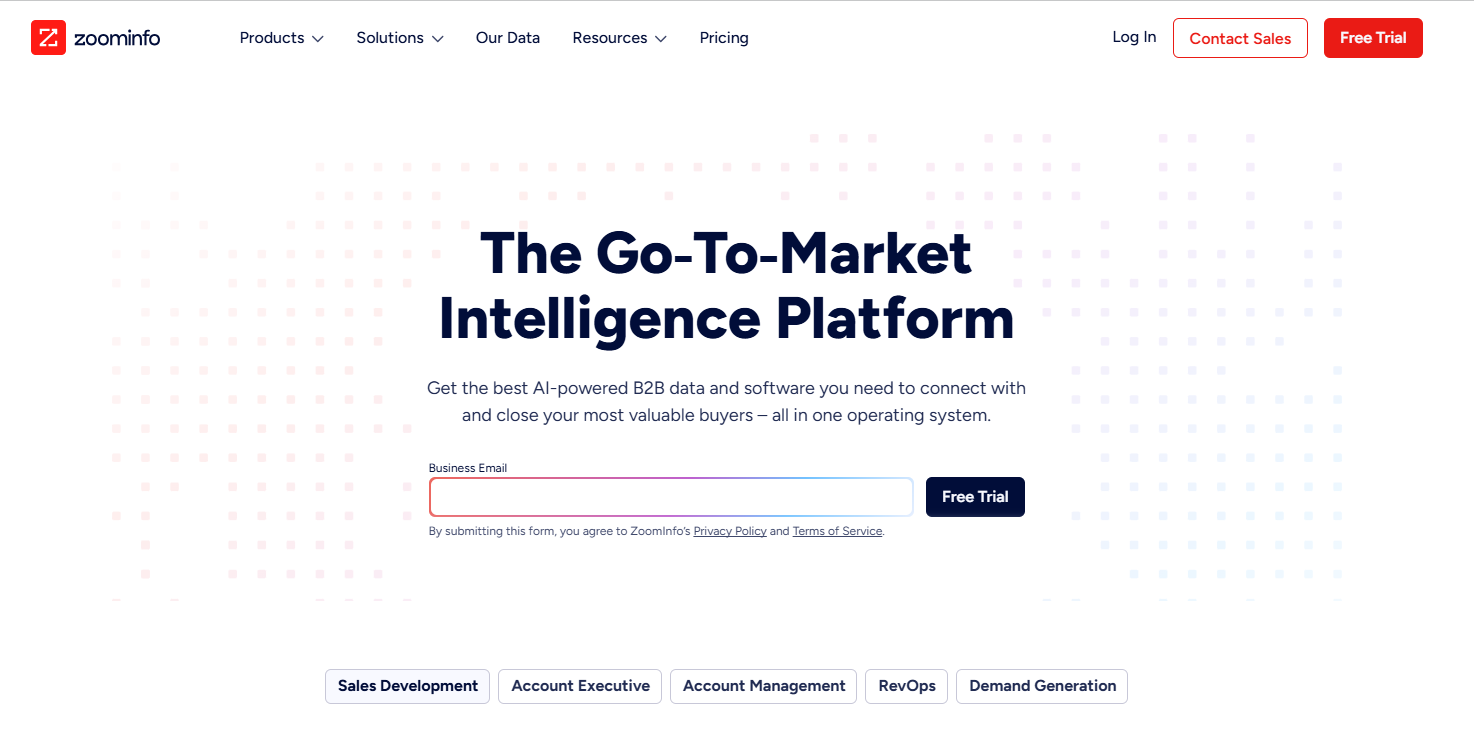
G2 Rating: 4.5/5 ⭐ from 8,758 reviews
- Type: Go-to-Market Intelligence Platform
- Pricing: Custom pricing based on features and database size
ZoomInfo has evolved from a contact database into a comprehensive go-to-market platform. The company and contact data are exceptionally detailed, often including direct dial numbers, email addresses, and detailed company information that's hard to find elsewhere.
The platform's strength lies in its data quality and the depth of information available. You're not just getting basic contact details; you're getting insights into company growth, technology usage, and buying intent signals.
The intent data, in particular, helps you identify companies that are actively researching solutions like yours. This lets you prioritize prospects who are most likely to buy in ways very few tools can match.
Standout Features:
- Robust database with 70M+ phone numbers and 174M+ verified email addresses.
- Intent data and buyer signals
- Company and contact enrichment
- Email and phone engagement tools
- Website visitor identification
- Integration with major business platforms
Zapier
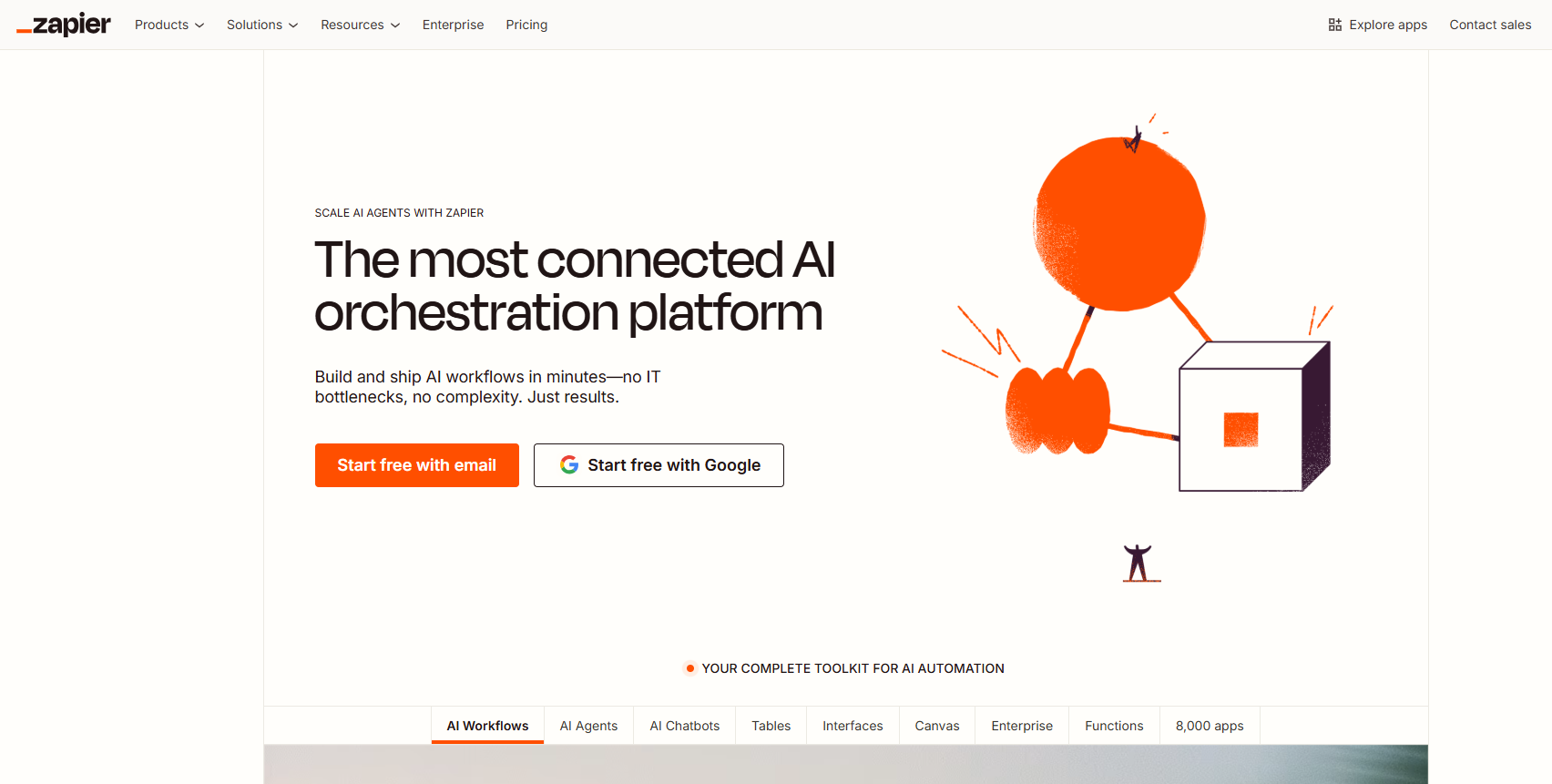
G2 Rating: 4.5/5 ⭐ from 1,348 reviews
- Type: Workflow & App Automation
- Pricing: Free plan available; paid plans from $19.99/month
Zapier isn’t built specifically for sales, but it can dramatically automate your sales process by connecting all your business tools together.
If you can think about a process being automated, Zapier can help you get it running. These could be automations within a single piece of software or through account linking across various pieces of software.
Want to create a lead in your CRM every time someone fills out a form? Or send an auto-reply when a prospect books a meeting? Zapier makes that easy with no-code “Zaps.” It’s not a CRM or an outreach tool, but it’s the duct tape that connects them, automating the gaps between your platforms.
Standout Features:
- Connect 8,000+ apps without writing code
- Automate multi-step workflows
- Popular templates for CRMs, email, and lead capture
- Trigger actions on form submissions, calendar invites, and emails
- Great for custom sales stack automation
Lemlist
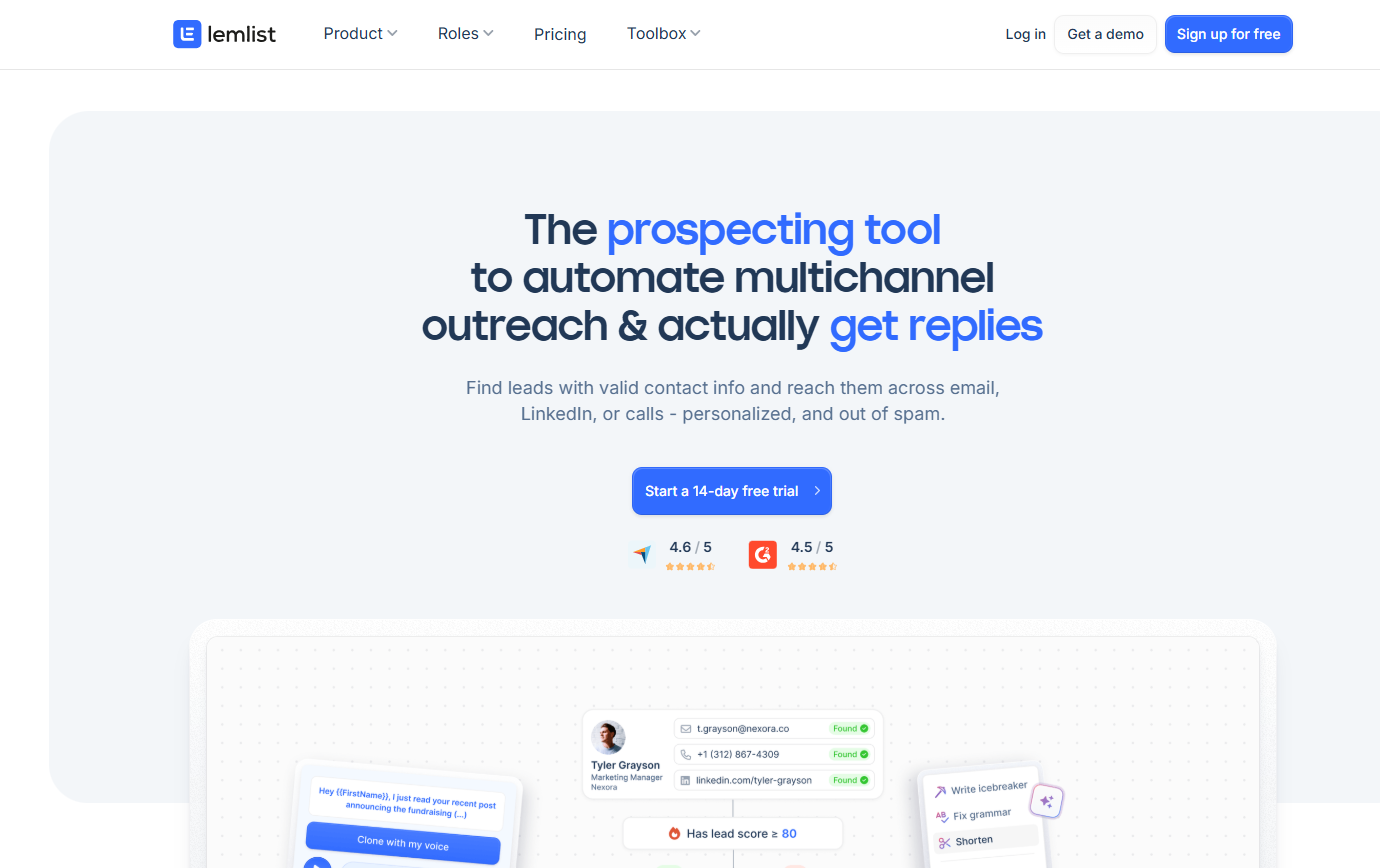
G2 Rating: 4.4/5 ⭐ from 275 reviews
- Type: Cold Email & Multichannel Engagement
- Pricing: Email Pro at $69/month; Multichannel Expert at $99/month per user
Lemlist is focused on personalization at scale. It allows you to build cold email sequences, add dynamic images, track replies, and trigger multichannel follow-ups. It also offers deliverability tools to help warm up your domains and avoid spam folders.
If you’re a small-to-mid-sized team running outbound campaigns and want both creativity and automation in one place, Lemlist is a strong option.
Standout Features:
- Highly personalized outreach with custom images
- 450 million+ lead database
- Deliverability tools, including inbox rotation and warmup
- Multi-touch workflows across email, phone, and LinkedIn
- Inbox management and reply detection
- Native integrations with popular business software
Key Takeaways
Sales automation software removes friction so your team can do more of what works without hassle. Whether you're automating outreach, managing leads, or syncing data across platforms, the right software should feel like a natural extension of your process, not a complicated workaround.
Here’s what to keep in mind:
- Start with your bottlenecks. Choose tools that solve real problems for your team.
- Chase fit, not features. A simpler tool you’ll actually use beats a complex one you won’t.
- Look for platforms that grow with you. Sales tools evolve fast, and so should your stack.
- Prioritize efficiency, lead flow, and visibility. That’s the trifecta that matters.
If cold outreach is part of your strategy, Instantly gives you a running start with lead data, email deliverability tools, and campaign automation in one place. Start your free trial.





